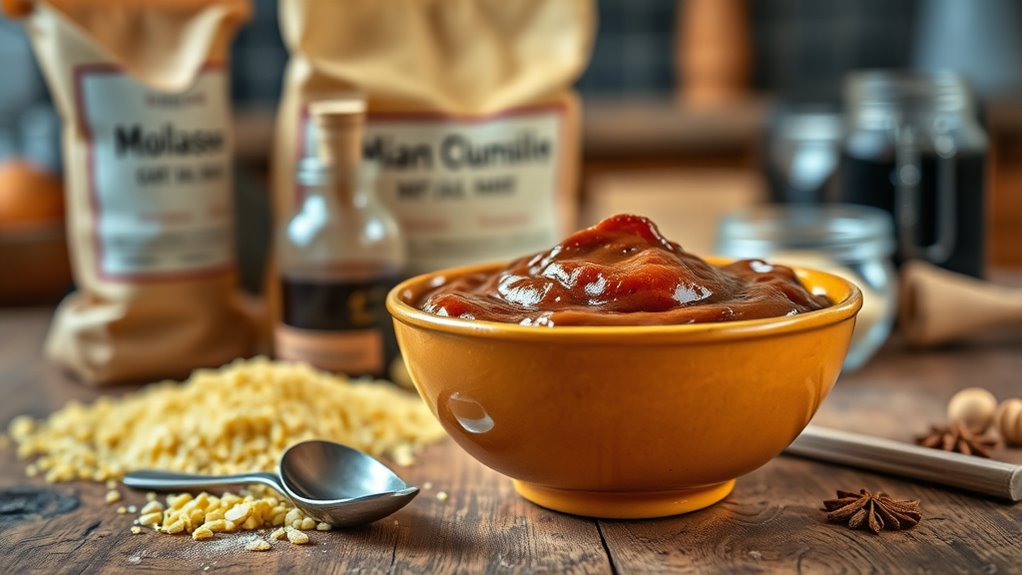To make Indian Pudding Durgin Park style, start by measuring 1 cup yellow cornmeal and 4 cups warm whole milk, slowly mixing to avoid lumps. Add 3/4 cup molasses, 1/2 cup brown sugar, and 1 tsp cinnamon after thickening the mixture over medium heat. Pour into a greased dish and bake at 300°F for 2-3 hours. Serve warm with whipped cream or maple syrup. Follow these steps, and you’ll soon enjoy a comforting, traditional dessert with rich flavor and texture.
Ingredients and Quantity
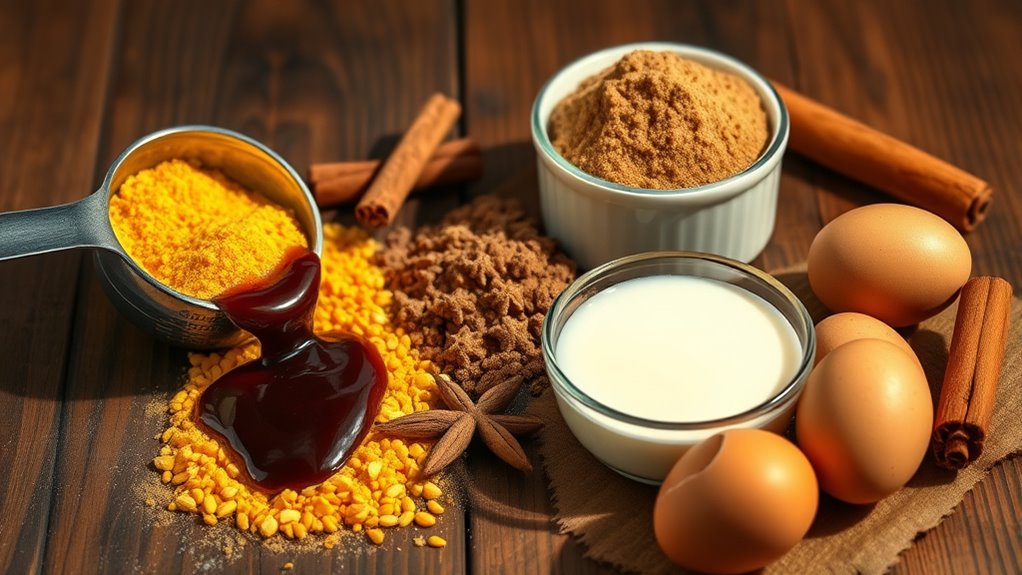
Before you begin making Indian pudding, you’ll need to gather specific ingredients in precise quantities to achieve its signature creamy texture and rich flavor. Getting your Indian Pudding ingredients right is essential, as even small deviations in Indian Pudding measurements can affect the final result. Here’s a clear list to help you visualize what you’ll need:
| Ingredient | Quantity |
|---|---|
| Yellow Cornmeal | 1 cup |
| Whole Milk | 4 cups |
| Molasses | 3/4 cup |
| Brown Sugar | 1/2 cup |
| Ground Cinnamon | 1 tsp |
These quantities guarantee your pudding is smooth, sweet, and perfectly spiced—allowing you the freedom to enjoy an authentic taste without compromise.
Preparations
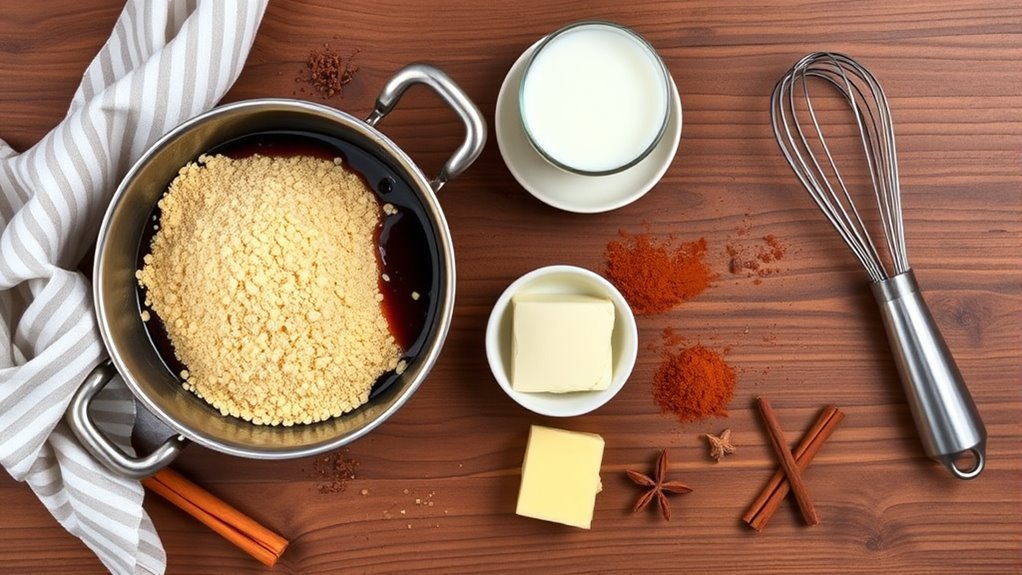
To prepare for making Indian pudding, start by measuring all your ingredients accurately and setting them within easy reach. This organized approach streamlines your cooking process, allowing you to focus on essential preparation techniques like slowly blending cornmeal into warm milk to avoid lumps. If you want to customize, consider ingredient substitutions such as using maple syrup instead of molasses for a subtler sweetness or almond milk for a dairy-free version. Chilling the milk beforehand can also improve texture. Remember to preheat your oven and grease your baking dish to prevent sticking. These thoughtful steps make your preparation more efficient and adaptable, giving you the freedom to tweak the recipe while preserving its traditional essence. With these preparations, you’re set for a smooth, enjoyable cooking experience.
How to Cook
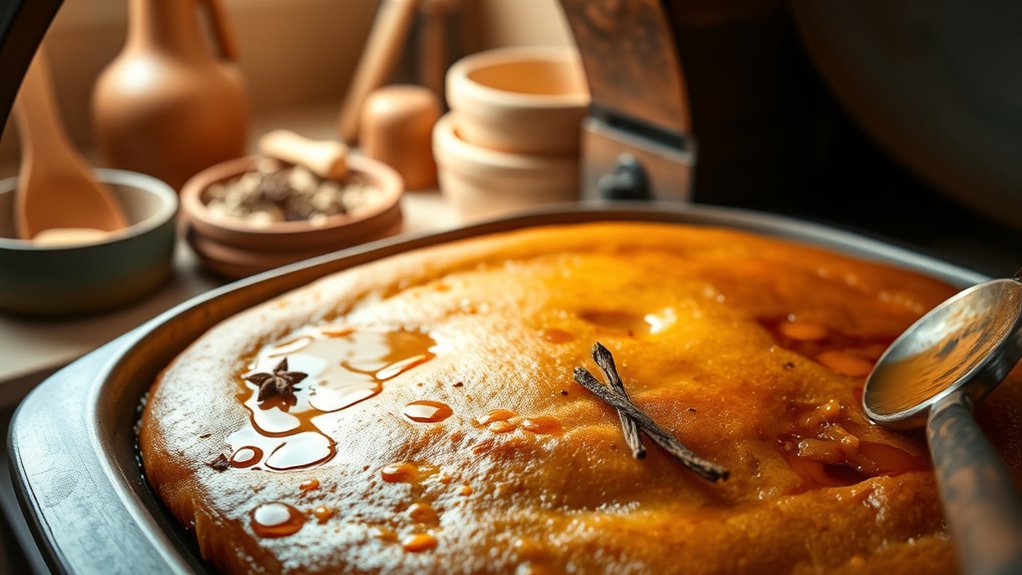
- Slowly combine the warm milk and cornmeal mixture over medium heat.
- Stir constantly to prevent lumps and ensure a smooth texture.
- Be patient and attentive to achieve the pudding’s classic consistency.
- Once the mixture thickens, remove it from heat.
- Blend in your sweeteners and spices.
- Consider ingredient substitutions such as maple syrup instead of molasses or almond milk as a dairy alternative to suit your tastes and dietary needs.
- Transfer the mixture to a buttered baking dish.
- Bake at around 300°F for 2 to 3 hours, low and slow, until the pudding sets and develops a caramelized surface.
- Follow these steps to enjoy a rich, authentic Indian pudding with room for customization.
How to Serve
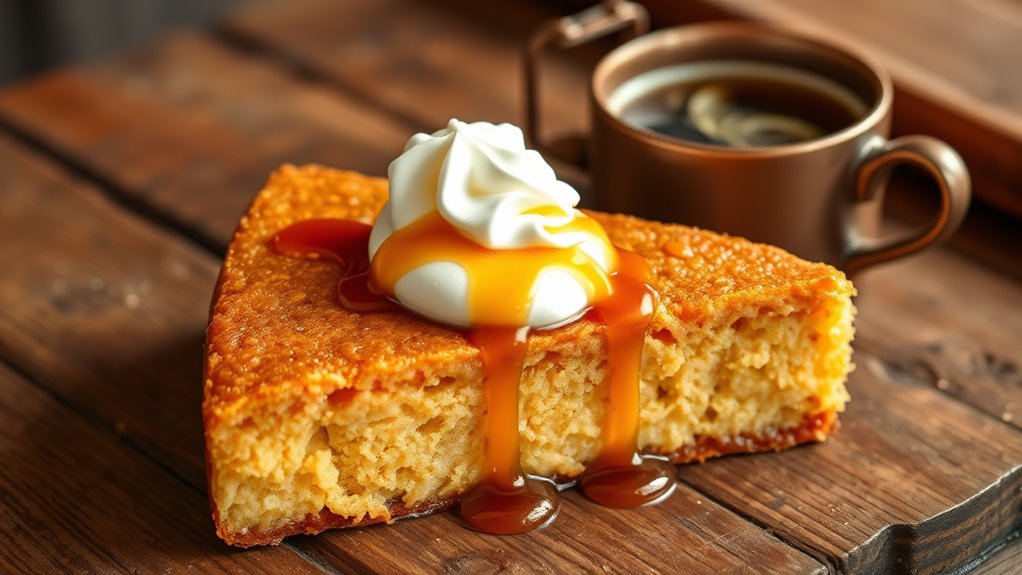
Once your Indian pudding has baked to a golden caramelized finish, serving it properly will enhance its rich flavors and comforting texture. To make your experience even more enjoyable, consider these serving suggestions that complement the pudding’s warm, spiced essence.
- Serve warm with a dollop of whipped cream or a scoop of vanilla ice cream for a classic dessert pairing.
- Drizzle with maple syrup or honey to add a natural sweetness that balances the pudding’s deep molasses notes.
- Pair with a hot cup of chai or coffee to contrast the creamy pudding with a robust beverage.
These simple yet effective approaches let you savor each bite while staying true to the pudding’s traditional appeal, offering freedom to personalize your dessert presentation.
Tips

Although Indian pudding is straightforward to prepare, paying attention to a few key tips can greatly elevate the final dish. To start, mastering gentle cooking techniques is essential—slow simmering over low heat guarantees the pudding thickens evenly without burning. Stir frequently to prevent the milk from scorching at the bottom. If you’re aiming for a lighter version, consider ingredient substitutions like using almond or oat milk instead of whole milk, or swapping molasses with maple syrup for a milder sweetness. Don’t hesitate to adjust spices to your taste; cinnamon and nutmeg amounts can be tailored. Remember, this dessert benefits from resting time, so let it cool and set to develop its rich, comforting flavors. These tips give you freedom to customize while honoring tradition.
Food Value and Benefit
Indian pudding, a traditional and comforting dessert, is not only delicious but also provides several nutritional benefits. This prepared dish combines wholesome ingredients that contribute to your overall health. The key nutrients and benefits of enjoying Indian pudding include:
Indian pudding is a delicious, traditional dessert packed with wholesome ingredients that boost your overall health.
- Complex carbohydrates from cornmeal, offering sustained energy and helping to maintain stable blood sugar levels.
- Calcium and protein from milk, essential for strong bones, teeth, and muscle repair.
- Iron and antioxidants from molasses, which support immune function and help combat oxidative stress.
- Contains vitamins such as Vitamin A and Vitamin B-complex from milk and molasses, which aid in energy metabolism and maintaining healthy skin.
- Minerals like calcium, iron, magnesium, and potassium that contribute to bone health, oxygen transport, and electrolyte balance.
Eating Indian pudding provides a nourishing treat that supports energy levels, bone strength, and overall wellness.
